In video from december 2019, cited by @zyx066 in his recent article there is one thing that caught my attention. At the end of discussion, Jim Braude asked Stephen Kinzer, a former foreign correspondent for the New York Times, what is his assessment of the future if US will get out of Afghanistan. Stephen Kinzer responded (I’ve underlined sentences which I’m going to discuss):
it’ll be very similar to what happened in Vietnam, the government will survive for perhaps a year, then the Taliban will take over and you’ll get situation like we had in Vietnam – there will be a period of harsh repression then new generation will take over and I think you’ll see a situation like we saw in Vietnam, that there will be continued harsh rule from the top but there will be more prosperity, more stability and as you saw in Vietnam strangely even a good relation with the United States to continue this in future
So the discussion about highlighted statements boils out basically to acknowledgment that without external help, prosperity in Afghanistan is simply impossible.
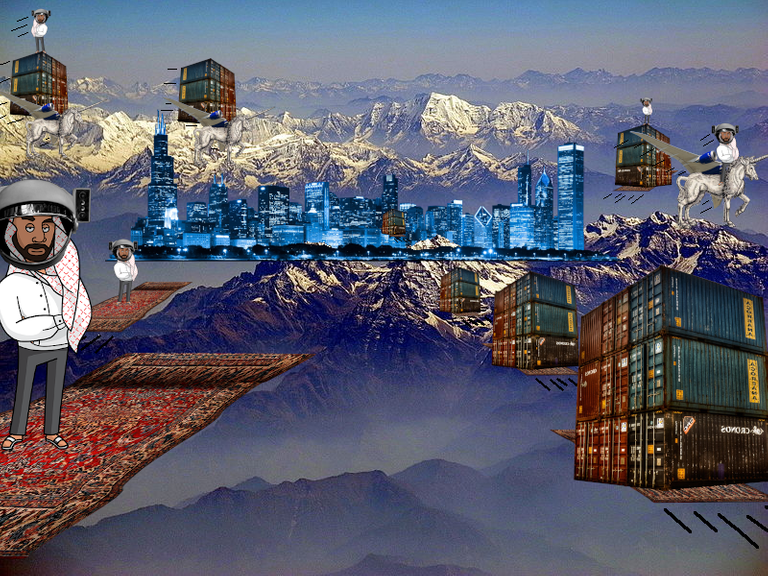
“Prosperity in Afghanistan”, License: CC-SA, composed from: [Himalayas] [skyline] [prince] [unicorn] [carpet] [suit] [wings] [cargo]
If we compare both countries, there seem to be some slight geographical and climatic differences.
First of all, there are drastic differences in climate.
Arid climate in Vietnam is nearly non-existent, roughly half of country have tropical climate, and half moderate, with significant part of moderate climate area below altitude 500 m.
While in Afghanistan, most of non-mountainous part of country is desert, there are just 3 small patches of temperate climate below or around 1km altitude
- on western border in middle between Herat and Mazar-e-Sharif
- on border north from Kondoz
- in valley north from Jalalabad
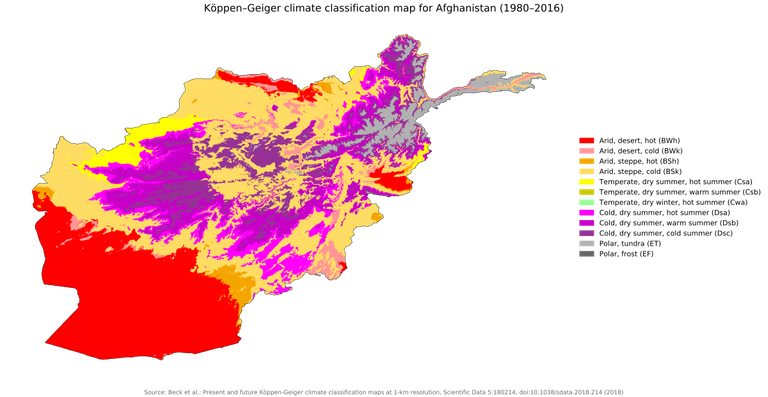
As mentioned, there is also difference in topography.
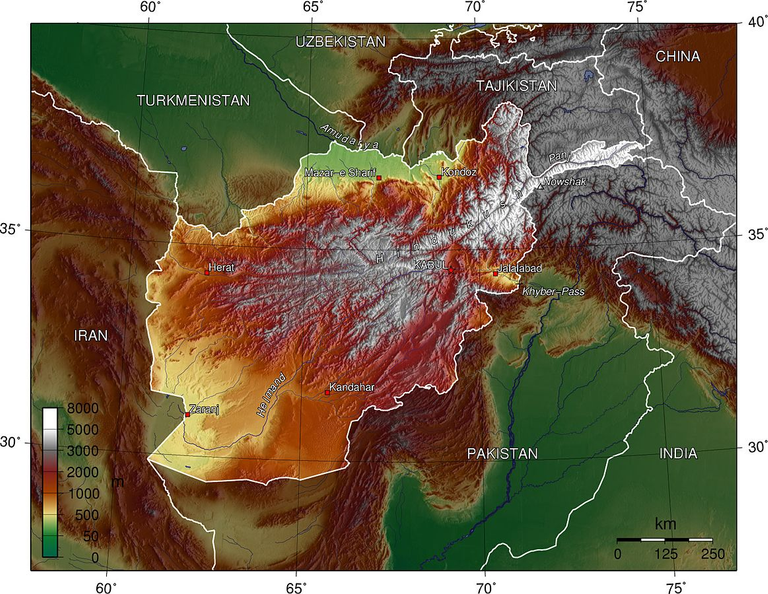
topography of Afghanistan [source]
In case of Afghanistan, most of the country lies at or above 1km altitude, with over half above 2k.
While in Vietnam, there are high mountains in the country, however most of it lies below 1km altitude, with highest point 3,142 meters (over 1.5 km lower than lowest point in passage between Afghanistan and China).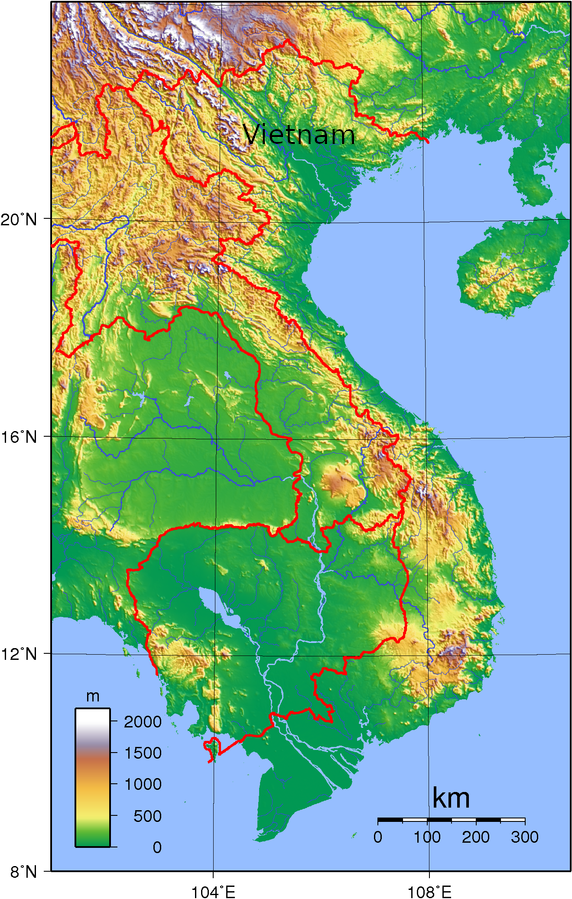
topography of Vietnam [source]
There are also other differences stemming from topography:
territorial integrity
- in Afghanistan, non-mountainous regions on east, west, and desert on south are separated from each other by mountains
- Vietnam is quite long and narrow, however there is no mountainous separation of significantly large regions by altitudes higher than 1km
number of roads and railroads connecting to China, which is largest economical power in region
Afghanistan has no connection, there is valley Wakhjir Pass between Afghanistan and China (with highest point at an altitude of 4,923m), however according to Wikipedia:
Border is short and in mountains basically 5km altitude and higher, countries are separated by some 300 km if not more distance of such high mountains.
in case of Vietnam, there are both road and railroad connections with China,
also about 200km of north border with China is at altitudes mostly below 1km, with pass near coast below 500 m altitude
while both countries have international airports (though Afghanistan has difficulties with coverage by international carriers), commercial planes don't fly over Himalayas
lower level of oxygen on high altitude hinders work, manual transport, and even brain function overall
high mountains, hard to access, give a lot of opportunities for terrorists to hide
Additionally, as recent earthquake has shown, steep slopes magnify damage:
In most places in the world, an earthquake of that magnitude wouldn’t inflict such extensive devastation, said Robert Sanders, a seismologist with the U.S. Geological Survey. But a quake’s death toll more often comes down to geography, building quality and population density.
“Because of the mountainous area, there are rockslides and landslides that we won’t know about until later reporting. Older buildings are likely to crumble and fail,” he said. “Due to how condensed the area is in that part of the world, we’ve seen in the past similar earthquakes deal significant damage.”
Finally, Afghanistan is landlocked country, while Vietnam has many ports, which in 2020 carried about 397.5 million metric tons.
The only one similarity I was able to find is that both countries will disproportionately suffer due to effects of climate change – in Afghanistan it is mainly desertification in already arid country, in Vietnam diverse geography means it is hit by typhoons, landslides, flooding and droughts making it one of most susceptible to climate change countries.
Despite last similarity, differences are so drastic between these two countries, that it made me to bother, whether Stephen Kinzer meant:
- prosperity so extreme that it run into integer overflow (and turned out to be negative)
- or maybe he meant dust growing from the ground to air and mountains not walking away (though stones on these slopes are often quite unstable when earthquake occur)
For sure, currently there is prosperity (aka growth) of violence and stability of poverty in Afghanistan, though I don’t know what to understand by relations with USA, maybe introduction of brand new types of terrorists...
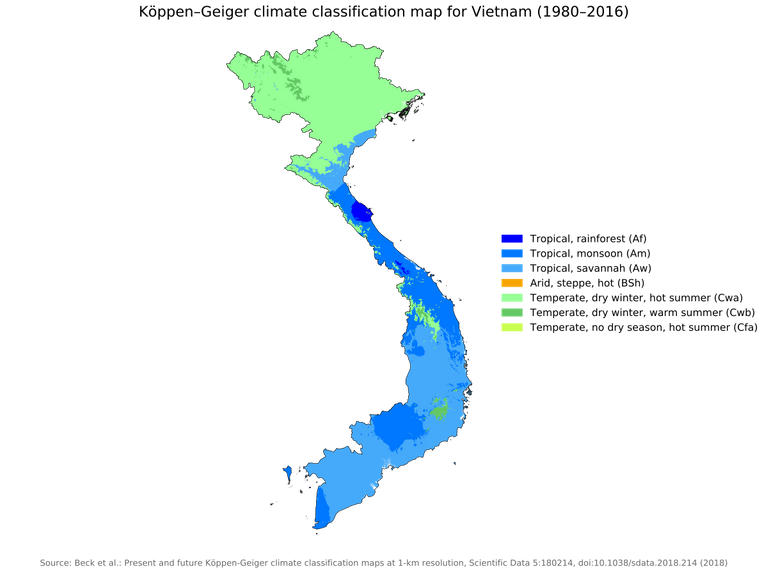
🆗👍💪🇦🇷